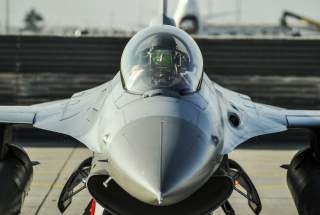What America's Big New Defense Plan Gets Wrong
Five points on which the Pentagon’s "Third Offset" deserves scrutiny.
Viewed through this lens, the DoD’s proposed new threat based planning construct, by its nature, tends to shortchange the need to maintain a robust, broad scale irregular warfare capability for counterinsurgency, stability operations, and other low intensity operations. Under the planned approach, we will likely maintain a limited capability in our Special Operations Forces but our main ground forces will have largely reverted away from these missions.
The Need for a Top-Down Review of Irregular Warfare Capabilities. The next administration should seek to “balance” its portfolio by directing a top-down, across-the-board review of our commitment to irregular and low-intensity warfare—doctrine, organization, training, equipage and investment—to ensure the right mix of capabilities, organization and investments to fight small- and large-scale irregular conflicts in which the United States is more more likely to engage. The administration should also carefully consider which defense-planning construct to utilize, and whether to adopt a possible mixed threat-capabilities approach to ensure we do not over-shift in one direction or the other.
Conclusion
Ultimately, it will be up to the next administration to decide whether to continue, with some possible tweaks of its own, the flight path of the Third Offset, or head off in another direction. While the offset construct can be a useful tool to catalyze innovation and produce game changers where possible, as an operational or acquisition approach it seems more akin to Greek mythology than a twenty-first-century war-fighting strategy.
Given the nature of innovation, the notion that DoD (or anyone) is prescient and wise enough to identify and direct, from the top down, a Third Offset that provides an overmatch across the broad range of threats we face is dubious. Constructing a strategy around an unproven cluster of technologies like autonomy, artificial intelligence and hypersonics long in advance of fielding seems more like Icarus’s use of wax wings near the sun (the catastrophic failure of a single technology) than prudent portfolio management.
Rather, the United States needs a balanced strategy and supporting portfolio of defense capabilities and investments that keeps our eye focused on the ball in play—the low-intensity conflicts we are more likely to encounter in the near-to-medium terms—while maintaining sufficient conventional capabilities to sustain deterrence against our traditional high-end adversaries and investing in “game-changer” or offset technologies relevant to such high-intensity capabilities. Under this approach, autonomy and artificial intelligence could be one targeted area among others, rather than a central focus of attention.
Jeffrey P. Bialos is a Partner in the law firm of Sutherland Asbill & Brennan LLP and an adjunct Senior Fellow at the Center for Transatlantic Relations at John Hopkins University’s Paul H. Nitze School of Advanced International Studies. He served as Deputy Under Secretary of Defense for Industrial Affairs in in other senior positions during the Clinton administration. Stuart L. Koehl is a military historian and defense analyst with forty years of experience, who has worked on the assessment of foreign military forces for the Defense Department’s Office of Net Assessment and assisted on a wide range of programs for DoD and the aerospace industry. He serves as an Adjunct Fellow at the Center for Transatlantic Relations, has authored and coauthored a number of books and articles on national security and defense, and is a regular contributor to the Weekly Standard.
Image: Lt. Col. Thomas Wolfe performs preflight checks on F-16 Fighting Falcon at Bagram Air Field, Afghanistan. Flickr/DVIDSHUB.

